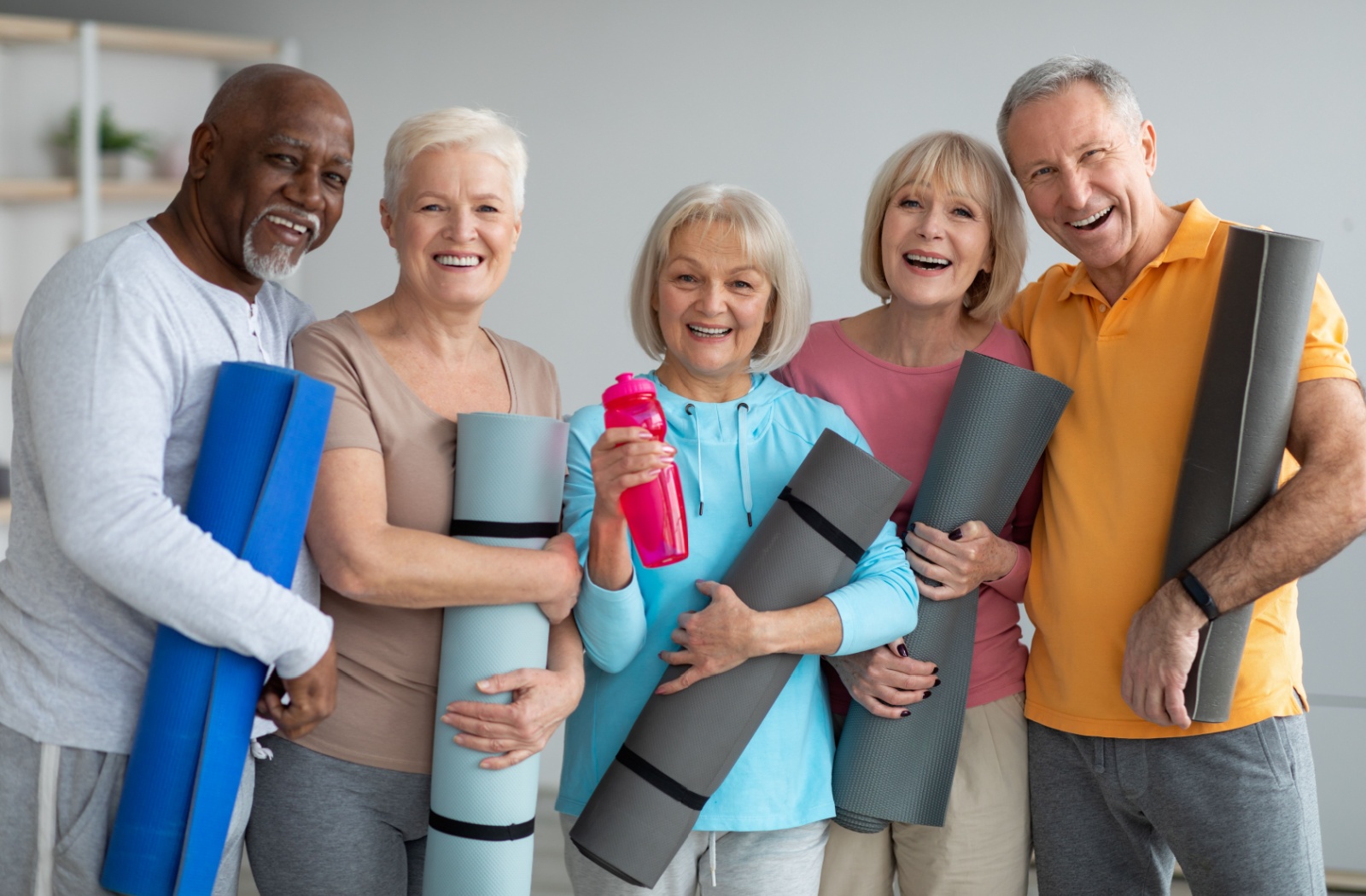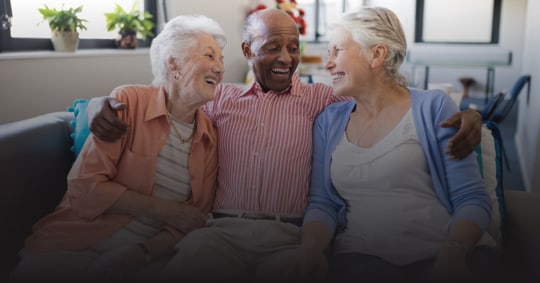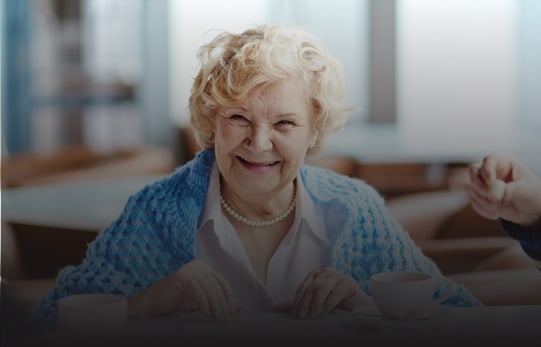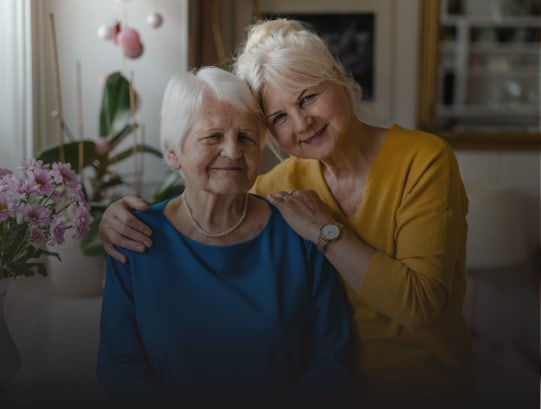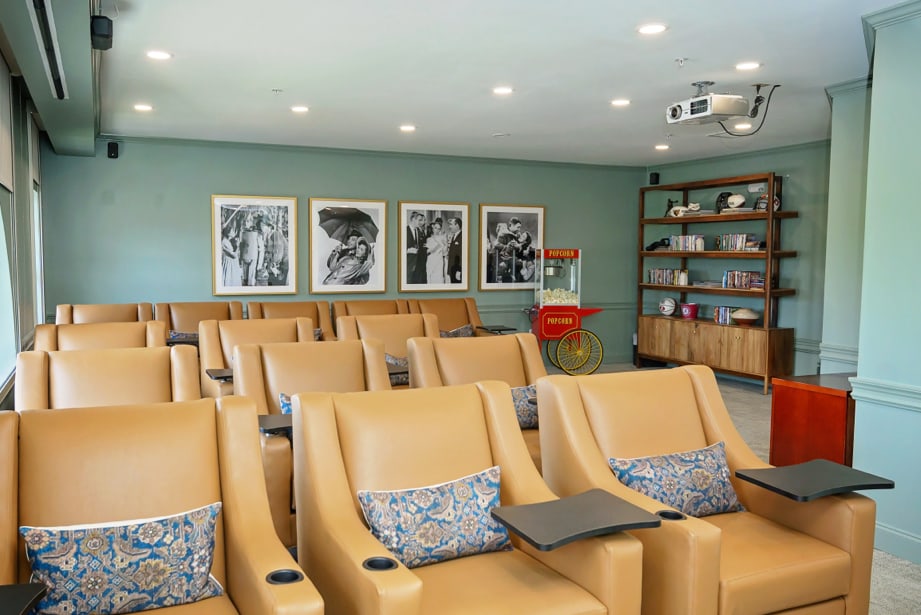Key Takeaways
- Low-impact exercises offer more ways for older adults to stay consistently active safely, whether solo or engaging with a group.
- Daily activity supports mobility, balance, energy, and independence. These activities can significantly benefit all aspects of health—including mental, physical, and emotional wellness.
- Older adults can enjoy options like chair yoga, water aerobics, and music-based movement.
- Senior living communities offer more ways for older adults to experience a broader range of activities, with guidance to adapt movement to different ability levels.
Staying active gets more important as we get older. However, that doesn’t mean exercise has to be intense. Some of the most effective ways to stay healthy are also the gentlest on the body.
With the right approach, older adults can enjoy physical activity that supports mobility, balance, and daily comfort without overexertion. These exercises provide safe, gentle ways to stay active without putting unnecessary strain on the body.
Some low-impact exercises that are perfect for seniors include:
- Walking
- Chair yoga
- Light strength training
- Water aerobics
- Tai chi
- Seated exercises
- Music-based movement
- Guided stretching
- Walking with assistance
Why Is Exercise So Important for Older Adults?
Regular movement offers a wide range of benefits that support health, wellness, and daily independence. Some of the most well-known benefits of physical activity:
- Improved heart and lung function, reducing the risk of cardiovascular issues
- Stronger bones and muscles, lowering the chances of falls and fractures
- Improved balance and coordination, supporting independent movement
- Increased energy, mood, and mental clarity, supporting emotional wellness
- Reduced risk of chronic conditions like type 2 diabetes and arthritis
Staying active can also improve sleep quality and help maintain a healthy weight. Many seniors also enjoy the social aspects of group classes or activities, which can ease feelings of isolation.
Low-Impact Exercises for Seniors in Independent Living
Many seniors in independent living communities enjoy a wider range of movement, helping residents maintain a consistent exercise routine more easily with age. These options can add variety for older adults with full mobility who want to stay active and flexible.
Walking
One of the simplest forms of movement is also one of the most beneficial. Walking for seniors can improve cardiovascular health, reduce joint stiffness, and support mental health. It’s also easy to adapt based on personal comfort and endurance.
Chair Yoga
Chair yoga is a gentle option that promotes flexibility and balance without requiring floor work. It involves simple poses and stretches done from a seated position, making it safe for most seniors.
Chair yoga helps with posture, joint mobility, and circulation. It’s also calming, making it a valuable tool for stress relief.
Light Strength Training
Maintaining muscle strength becomes more crucial with age. Using resistance bands or small hand weights can help preserve strength without straining the joints. A few minutes of resistance training a few times a week can make a noticeable difference in daily comfort and ability.
Low-Impact Exercises for Seniors in Assisted Living
Age sometimes creates new physical challenges. That’s entirely natural, but sometimes, these changes make exercise more complicated than it once was. Fortunately, these low-impact exercises are still easily accessible for older adults with limited mobility or flexibility.
Water Aerobics
Water aerobics is a fun, low-impact way to build strength and flexibility. The buoyancy of water reduces pressure on the joints, making it an accessible choice for those with arthritis or balance issues.
Classes are often designed specifically for older adults. They work participants through gentle movements that support strength, range of motion, and cardiovascular health.
Tai Chi
Tai chi is an ancient practice that involves slow, intentional movements that flow from one to the next. Tai chi supports balance, posture, and coordination while also helping calm the mind. It’s particularly helpful for reducing the risk of falls and promoting joint stability.
Seated Exercises
For seniors with limited stamina or those who prefer chair-based options, seated exercises are highly effective.
Movements like arm circles, leg lifts, and upper-body stretches enable older adults to practice safely and consistently, all while seated. Even a short daily session can boost a person’s overall wellness.
Low-Impact Exercises for Seniors in Memory Care
Memory care programs often incorporate movement into daily routines in creative and gentle ways. Physical activity is vital for memory care residents because it supports routine, sensory engagement, and mood stability.

Music-Based Movement
Combining music with simple exercises can spark memory and bring joy. Clapping along, stepping in place, or swaying to familiar tunes keeps the body moving while stimulating the brain.
These sessions are often performed in groups and tailored to individual comfort levels, making them an inviting form of expression and engagement.
Guided Stretching
Stretching can reduce stiffness and increase comfort throughout the day. Short, instructor-led stretching routines help loosen muscles and improve a person’s range of motion. These movements are repeated and familiar, which helps with memory retention.
Walking with Assistance
Gentle walking with staff or a caregiver is a great way to support senior wellness in memory care. These short walks offer light activity and a chance for connection. Whether indoors or outside, even 5 to 10 minutes of walking can be beneficial.
How Often Should Older Adults Exercise?
There’s no one-size-fits-all answer to how much physical activity older adults need. However, general guidelines can help. Ideally, older adults over 65 should aim for about 150 minutes of moderate activity per week. What matters most is safety and consistency.
So, if you’re beginning an exercise routine, it helps to:
- Start with short sessions and increase time gradually
- Mix different types of movement like stretching, balance, and aerobic activity
- Listen to your body and adjust based on energy levels or discomfort
- Incorporate activities you enjoy, such as gardening, dancing, or walking with friends
- Stay consistent by setting a routine and tracking your progress to stay motivated
Staying active a little each day adds up over time and supports healthier, more comfortable living.
A Healthy and Active Life Is Within Reach
Staying active as you age shouldn’t feel overwhelming. With the right approach and a little support, physical activity can be enjoyable and rewarding. You deserve to feel supported at all times, and you’re not alone—our team at Somerby St. Vincent’s One Nineteen is ready to help.
In our community, we understand that movement is a part of feeling well. Our community supports residents of all mobility levels with thoughtful programs that celebrate healthy living. Schedule a visit with us today to learn more about how we make wellness a part of daily life.


